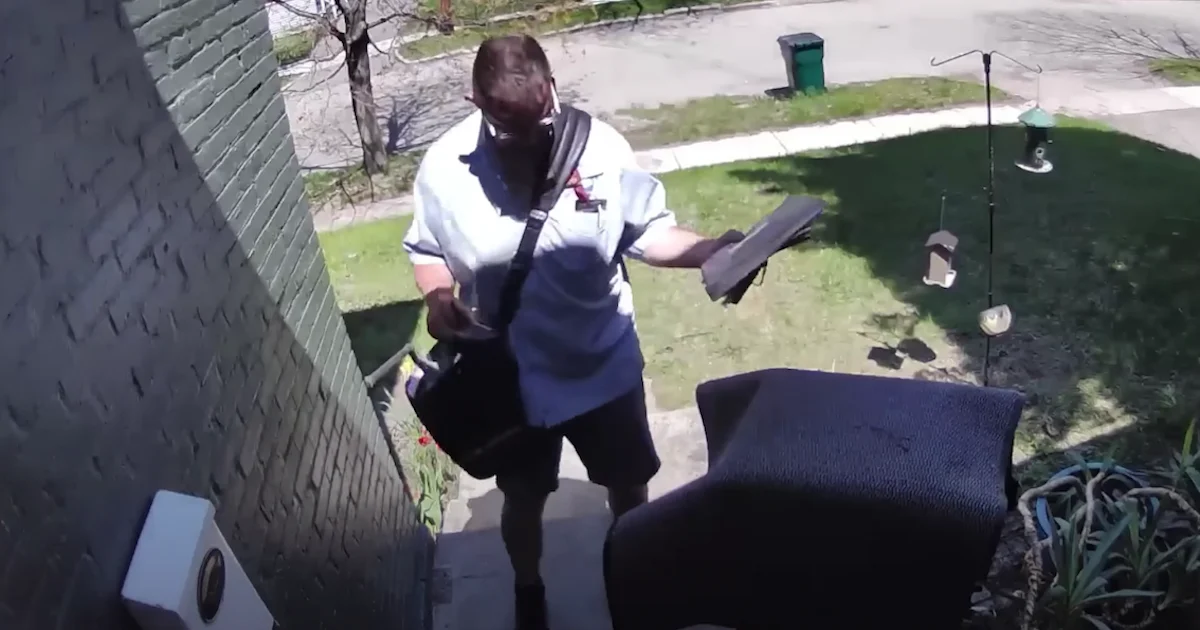

Six Ragdoll colors are considered traditional: seal, chocolate, blue, lilac, red, and cream. But some non-traditional colors and patterns are a little more controversial and aren’t accepted as purebred Ragdolls by all associations. One of those is cinnamon.
Let’s look at the cinnamon Ragdoll color and the fawn dilute of cinnamon.
Poe, Cinnamon Point Ragdoll, 3 years old loved by Christina
Cinnamon Ragdoll Quick Overview:
Appearance:
Fur: The defining characteristic is a warm, reddish-brown fur, often described as cinnamon, chocolate-ginger, or even chestnut. This color is present in the “points,” including the face, ears, legs, and tail. Depending on the pattern, their body can be lighter, often cream or ivory.
Patterns: They can come in various coat patterns like the classic pointed, bicolor (with white markings), and mitted (with white paws and chin). Some rarer patterns like mink and sepia are also possible (but those aren’t always accepted by cat associations and many passionate traditional Ragdoll enthusiasts).
Eyes: While blue is the most common eye color for traditional Ragdolls, cinnamon mink or sepia Ragdolls can have green, gold, or aqua eyes, adding to their unique charm.
Personality
Gentle: Like all Ragdolls, they are known for their laid-back and affectionate nature, earning the nickname “Ragdolls” due to their tendency to go limp when picked up.
Playful: Despite their calmness, they enjoy playtime and can be quite entertaining with their antics.
Intelligent: They are quick learners and can be trained with patience and positive reinforcement.
Social: They thrive on companionship and enjoy spending time with their humans.
Rarity and Availability:
Rare: Cinnamon Ragdolls are significantly rarer than their traditional counterparts due to the recessive nature of the cinnamon gene.
Cost: Their rarity translates to a higher price tag, typically ranging from $2,000 to $5,000 or even higher for show-quality cats.
Things to Consider:
Health: While generally healthy, Ragdolls can be prone to certain health conditions like hypertrophic cardiomyopathy (HCM). Responsible breeders will screen their cats for these conditions.
Grooming: Their medium-length fur requires regular brushing to prevent matting.
Commitment: Owning any pet requires significant time, resources, and love. Ensure you can provide the necessary care before bringing a cinnamon Ragdoll into your life.
Finding Your Dream Cat:
Reputable Breeders: Look for breeders who prioritize cat health, ethical breeding practices, and transparency. Do your research and ask questions before making any decisions. Be sure to watch out for scams.
Adoption: Consider adopting a Ragdoll from a shelter or rescue. While finding a cinnamon one might be challenging, you’ll be giving a loving home to a deserving cat.
More In-Depth Look at Cinnamon Ragdoll Cats
Cinnamon Ragdoll cats are not one of the traditional Ragdoll colors. Therefore, most associations will not recognize any cat presenting in cinnamon as a purebred Ragdoll. The only one that does is The International Cat Association (TICA).
TICA is more open to registering Ragdoll cats with different coat colors or patterns. However, any cinnamon Ragdoll with TICA status still won’t be eligible for competitions as they need to conform to traditional Ragdoll standards.
Cinnamon Ragdoll cats have reddish-brown fur and typically have a light-cream body if they are the colorpoint pattern. The cinnamon color will be present in the paws, mask, face, and tail. Solid cats will, of course, have cinnamon as their body color.
Cocoa, a Cinnamon Point Ragdoll, owned by Duncan
They don’t often have blue eyes and will sometimes have gold, green, or aqua eye color. Cinnamon Ragdoll cats can present as colorpoint, bicolor, and mitted, as well as the non-traditional patterns of mink, sepia, and solid.
Fawn Ragdoll cats are the same but have a lighter color, blended more with cream.
Cinnamon Ragdoll History
The cinnamon Ragdoll was once part of the breeding population of Ragdoll cats. Still, they were scarce, to the point where they needed to be re-established.
Dr. Maxine Stiles is a veterinarian based in Texas. She undertook this challenge and has spent many years developing a line of cinnamon, chocolate solid, and pointed Ragdoll cats, working alongside experienced breeder Sharon Steadman.
Stiles’ breeding program began with cats that were cinnamon- and chocolate-ticked, and cinnamon- and chocolate-smoked, which had some resemblance to Ragdoll cats. They originated from an Abyssinian six generations prior.
Sierra Rose Gold, a Cinnamon Point Ragdoll. Photo credit Kristi Pemberton, Big City Ragdolls
Using her cinnamon males and Ragdoll females, along with a cinnamon-ticked female, the breeding program began with the goal of retaining the cinnamon gene but removing the non-Ragdoll characteristics.
Once the cinnamon gene had been captured, TICA stated that the program had to cross back to traditional Ragdolls for another four generations to regain a complete SBT registry. They achieved this in 2007 with Dollnouveau Dr. Pepper, a fawn mitted point.
Cinnamon Ragdoll Genetics
The cinnamon gene in Ragdoll cats is a recessive mutation of the black-hair gene. It’s also part of an allelic group, which means the same gene has different mutations – in this case, chocolate and cinnamon. The dominant gene is black, B, so if the kitten gets the B black gene from either parent, it will present black.
The chocolate gene is recessive to black but dominant to cinnamon. So, if there is no black B gene but at least one b chocolate gene, the cat will present chocolate.
Sierra Rose Gold, a Cinnamon Point Ragdoll. Photo credit Kristi Pemberton, Big City Ragdolls
The only way for a kitten to present as cinnamon is to have two of the recessive cinnamon gene labeled b’ in their DNA.
This means that cinnamon Ragdoll cats were not easy to produce in a litter initially – you needed two parent cats with the b’ gene. Then you still only had a one in four chance of getting a b’b’ kitten.
But once the line was established, the kittens were guaranteed if bred from two cinnamon Ragdoll cats, as they would only carry the b’ gene.
Of course, that’s not how it happened since the first cinnamon cats had to be bred with other outlier Ragdolls for multiple generations to remove the non-Ragdoll characteristics.
Fawn Ragdoll cats result from a dilution – where the color density gene is again a one-in-four chance. The D gene will always result in the dominant color, so a b’b’ DD or b’b’ Dd cat will be cinnamon, while a b’b’ dd cat will be fawn.
Do Cinnamon Ragdolls have the same temperant as traditional Ragdoll Cats?
Any cinnamon Ragdoll kitty from a TICA-registered breeder will have the same temperament as other Ragdoll cats. Other cat associations may not officially recognize them, but they are essentially Ragdolls with the same personalities.
Remember that cats are individuals, though. The Ragdoll breed has certain traits, but not every cat is identical in manner and personality.
Cocoa, a Cinnamon Point Ragdoll, owned by Duncan
Are Cinnamon Ragdolls Rare?
Cinnamon Ragdoll cats are rare, although not as rare as they were 20 years ago, thanks to the work of Dr. Maxine Stiles.
Unfortunately, if you want a cinnamon Ragdoll, you won’t find them in most local breeders. Most Ragdoll breeders stick to the traditional colors.
However, they are possible to find. You may need to be flexible regarding distance, relying on video calls rather than in-person visits to meet your Ragdoll kitten before adoption. You may also need to have them sent to you by air instead of collecting them.
Remember that cinnamon Ragdolls can’t be used for competitions. This is because, in the eyes of the CFA and most other organizations, they don’t meet the Ragdoll breed standard. However, you can at least know that you’re getting a ‘genuine’ Ragdoll cat if you buy from a TICA-approved breeder.
How much does a cinnamon Ragdoll cost?
A Ragdoll cat price depends on two main factors: the breeder and the kitten’s quality.
Pet-quality kittens: These bundles of joy typically cost at least $2000, though the exact price depends on the breeder and their location.Breeder/show-quality cats: If you’re looking for a Ragdoll with exceptional features or breeding potential, expect to pay a premium. Prices can range from $2000 to a whopping $5,000+, especially for top-notch breeders and in certain regions of the US.
Adopting a Ragdoll from a shelter or rescue is an excellent, lower-cost alternative!
Mink Cinnamon Ragdolls
Milo, a Cinnamon Mink Ragdoll cat, and his littermate, Mochi, a Cinnamon Mink Ragdoll Cat loved by Jen (as kittens on the left and as adults on the right)
Milo, a Cinnamon Mink Ragdoll cat, and his littermate, Mochi, a Cinnamon Mink Ragdoll Cat loved by Jen
Milo, a Cinnamon Mink Ragdoll cat, loved by Jen
More Ragdoll Cat Colors and Patterns:
Hi, I’m Jenny Dean, creator of Floppycats! Ever since my Aunt got the first Ragdoll cat in our family, I have loved the breed. Inspired by my childhood Ragdoll cat, Rags, I created Floppycats to connect, share and inspire other Ragdoll cat lovers around the world,






